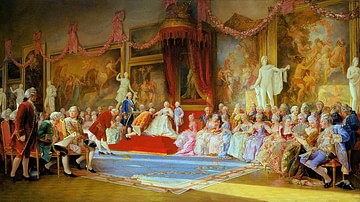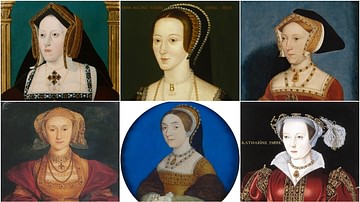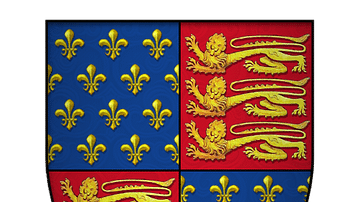Review

| Rating: | |
|---|---|
| Title: | The Lost Queen: The Surprising Life of Catherine of Braganza―the Forgotten Queen Who Bridged Two Worlds |
| Author: | Sophie Shorland |
| Audience: | General Public |
| Difficulty: | Easy |
| Publisher: | Pegasus Books |
| Published: | 2024 |
| Pages: | 352 |
This book is highly recommend because it is gorgeously written as a novel with visual descriptions that are so clear that they can be painted on canvas. A screenplay of the book begs to be written and the film needs to be produced. The general audience would definitely find this title accessible.
British author, Sophie Shorland, a former Research Fellow at the University of Warwick, takes a very friendly approach to describe the difficult life of King Charles II's Queen Consort, the Portuguese Catherine of Braganza. Shorland's audience is general, especially those interested in the British Restoration, epitomized by the handsome, lusty Charles II ("The Merrie Monarch"). This title is an easy read and designed for the general readership. The level of engagement that the writing provides would make this book a blockbuster movie, filled with sparkling characters fighting for the top spot in the Royal Court.
Shorland divides Catherine's life into ten chapters, beginning with her repressive childhood, which coincides with her future husband's exile in France after the beheading of his father, Charles I. When the rigid dictatorship of Oliver Cromwell became too much to bear, the political pendulum swung back, and the people demanded the Restoration of the lawful King, the young Charles Stuart.
Readers follow the two years of political and financial machinations necessary to enthrone the indigent Charles. He needed to marry quickly to continue the Stuart succession. Charles's brother, James, Duke of York, was Catholic, just like Charles, heralding the anti-Catholic riots during his marriage to the Catholic Princess Catherine of Braganza. England needed a cash infusion, and Catherine's dowry was her most important attraction, bringing Tangier and parts of India to the marriage; Portugal, fighting for its independence from Spain, was poor, and unable to pay all the dowry to England.
Catherine finally arrived in England, seasick, sneezing, and unable to speak English. Her subjects thought her strange, with her odd hairstyle, her olive skin, and her outlandish Portuguese gowns. The Restoration, known for its brilliant colors and lush materials (silk and velvet), saw Catherine and her female attendants wearing heavy black farthingales, skirts so wide that entry was only possible sideways. Catherine's annual allowance at her marriage was 30,000 pounds Sterling, most spent on her private chapel decorations, alienating her Protestant subjects. She tried to befriend her husband's mistresses (there were at least six) and all his illegitimate children. Lonely Catherine's sole English "friend" was the Catholic Lady Castlemaine, Barbara Palmer, Charles's chief mistress. Catherine tried to please Charles: taking dance lessons, throwing lavish parties, popularizing tea drinking, and promoting Baroque art and fashion. Her childlessness was disappointing both to her and to Charles, who was desperate for a legitimate heir. Her frequent miscarriages may have been caused by endometriosis, though that is uncertain. Charles was publicly polite to her but privately self-indulgent – with his mistresses, their children, and his "scientific" hobbies. He managed to persuade Catherine to accept his scientific interest, for they were frequently self-dosed with bizarre concoctions of pulverized skulls and dried snakes. She, seeking relief from depression and hysteria, resorted to laxatives, convincing herself that the "toxins" leaving her body would result in her renewed health.
Some years after Charles II's death, Catherine returned to Portugal, where her monarch brother soon died. Now Portuguese Regent, Catherine became their guardian-tutor, ironic since she had been so poorly educated. Her kindness was evident in her will: to free all child slaves, though she had never owned any. This wonderful book has a bibliography and complete citations, pointing readers to directions for further reading.
About the Reviewer
Cite This Work
APA Style
Rogovein, R. (2024, August 12). The Lost Queen: The Surprising Life of Catherine of Braganza―the Forgotten Queen Who Bridged Two Worlds. World History Encyclopedia. Retrieved from https://www.worldhistory.org/review/462/the-lost-queen-the-surprising-life-of-catherine-of/
Chicago Style
Rogovein, Reisa. "The Lost Queen: The Surprising Life of Catherine of Braganza―the Forgotten Queen Who Bridged Two Worlds." World History Encyclopedia. Last modified August 12, 2024. https://www.worldhistory.org/review/462/the-lost-queen-the-surprising-life-of-catherine-of/.
MLA Style
Rogovein, Reisa. "The Lost Queen: The Surprising Life of Catherine of Braganza―the Forgotten Queen Who Bridged Two Worlds." World History Encyclopedia. World History Encyclopedia, 12 Aug 2024, https://www.worldhistory.org/review/462/the-lost-queen-the-surprising-life-of-catherine-of/. Web. 24 Apr 2025.




